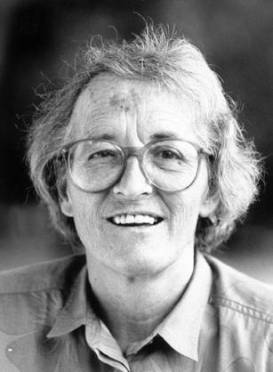Related Research Articles

Death is the irreversible cessation of all biological functions that sustain a living organism. The remains of a former organism normally begin to decompose shortly after death. Death eventually and inevitably occurs in all organisms. Some organisms, such as Turritopsis dohrnii, are biologically immortal, however they can still die from means other than aging. Death is generally applied to whole organisms; the equivalent for individual components of an organism, such as cells or tissues, is necrosis. Something that is not considered an organism, such as a virus, can be physically destroyed but is not said to die, as a virus is not considered alive in the first place.
Shiva is the week-long mourning period in Judaism for first-degree relatives. The ritual is referred to as "sitting shiva" in English. The shiva period lasts for seven days following the burial. Following the initial period of despair and lamentation immediately after the death, shiva embraces a time when individuals discuss their loss and accept the comfort of others.

The Peoples Temple Agricultural Project, better known by its informal name "Jonestown", was a remote settlement in Guyana established by the Peoples Temple, an American cult under the leadership of Jim Jones. Jonestown became internationally infamous when, on November 18, 1978, a total of 918 people died at the settlement, at the nearby airstrip in Port Kaituma, and at a Temple-run building in Georgetown, Guyana's capital city. The name of the settlement became synonymous with the incidents at those locations.

Grief is the response to the loss of something deemed important, particularly to the loss of someone or some living thing that has died, to which a bond or affection was formed. Although conventionally focused on the emotional response to loss, grief also has physical, cognitive, behavioral, social, cultural, spiritual and philosophical dimensions. While the terms are often used interchangeably, bereavement refers to the state of loss, while grief is the reaction to that loss.

Rachel Joy Scott was an American student who was the first fatality of the Columbine High School massacre, in which 11 other students and a teacher were also murdered by Eric Harris and Dylan Klebold, who then committed suicide.
According to the model of the five stages of grief, those experiencing grief go through five emotions: denial, anger, bargaining, depression and acceptance. Although it is in common use, studies have not confirmed these stages, and the model has been criticized as outdated as well as unhelpful in explaining the grieving process.

Elisabeth Kübler-Ross was a Swiss-American psychiatrist, a pioneer in near-death studies, and author of the internationally best-selling book, On Death and Dying (1969), where she first discussed her theory of the five stages of grief, also known as the "Kübler-Ross model".

A wake is a social gathering associated with death, held before a funeral. Traditionally, a wake involves family and friends keeping watch over the body of the dead person, usually in the home of the deceased. Some wakes are held at a funeral home or another convenient location. The wake or the viewing of the body is a part of death rituals in many cultures. It allows one last interaction with the dead, providing a time for the living to express their thoughts and feelings with the deceased. It highlights the idea that the loss is borne by the whole community and is a way of honoring the deceased member. The emotional tone of a wake is sometimes seen as more positive than a funeral due to the socially supportive atmosphere and the focus on the life rather than the death of the deceased.
Survivor guilt or survivor's guilt is a mental condition that occurs when a person believes they have done something wrong by surviving a traumatic or tragic event when others did not.

During the early hours of 31 August 1997, Diana, Princess of Wales, died from injuries sustained earlier that night in a fatal car crash in the Pont de l'Alma tunnel in Paris, France. Diana's partner, Dodi Fayed, and the driver of the Mercedes-Benz W140, Henri Paul, were found dead inside the car. Dodi's bodyguard, Trevor Rees-Jones, was seriously injured and was the only survivor of the crash.

RMS Titanic sank on 15 April 1912 in the North Atlantic Ocean. The largest ocean liner in service at the time, Titanic was four days into her maiden voyage from Southampton to New York City, with an estimated 2,224 people on board when she struck an iceberg at 23:40 on 14 April. Her sinking two hours and forty minutes later at 02:20 ship's time on 15 April, resulted in the deaths of more than 1,500 people, making it one of the deadliest peacetime maritime disasters in history.

A broken heart is a metaphor for the intense emotional stress or pain one feels at experiencing great loss or deep longing. The concept is cross-cultural, often cited with reference to unreciprocated or lost love.

Suicide is the act of intentionally causing one's own death. Mental disorders, physical disorders, and substance abuse are risk factors. Some suicides are impulsive acts due to stress, relationship problems, or harassment and bullying. Those who have previously attempted suicide are at a higher risk for future attempts. Effective suicide prevention efforts include limiting access to methods of suicide such as firearms, drugs, and poisons; treating mental disorders and substance abuse; careful media reporting about suicide; improving economic conditions; and dialectical behaviour therapy (DBT). Although crisis hotlines are common resources, their effectiveness has not been well studied.
Mary Cecilia Rogers was an American murder victim whose story became a national sensation.
Stephen Levine was an American poet, author and teacher best known for his work on death and dying. He is one of a generation of pioneering teachers who, along with Jack Kornfield, Joseph Goldstein and Sharon Salzberg, have made the teachings of Theravada Buddhism more widely available to students in the West. Like the writings of his colleague and close friend, Ram Dass, Stephen's work is also flavoured by the devotional practices and teachings of the Hindu Guru Neem Karoli Baba. This aspect of his teaching may be considered one way in which his work differs from that of the more purely Buddhist oriented teachers named above. Allusions in his teachings to a creator, which he variously terms God, The Beloved, The One and 'Uugghh', further distinguish his work from that of other contemporary Buddhist writers.

Heaven's Gate was an American new religious movement known primarily for the mass suicides committed by its members in 1997. Commonly designated a cult, it was founded in 1974 and led by Bonnie Nettles (1927–1985) and Marshall Applewhite (1931–1997), known within the movement as Ti and Do, respectively. Nettles and Applewhite first met in 1972 and went on a journey of spiritual discovery, identifying themselves as the two witnesses of Revelation, attracting a following of several hundred people in the mid-1970s. In 1976, a core group of a few dozen members stopped recruiting and instituted a monastic lifestyle.

Michelle L. Rusk, born Michelle Linn, and formerly known as Michelle Linn-Gust, is an American author and speaker on coping with grief following suicide, especially that of siblings. She is a Past President of the American Association of Suicidology and she has written several books about the experiences of families following the suicide of a member, given workshops to the bereaved and the clinicians who work with them on dealing with their grief, and spoken widely on the topic. She also has offered workshops in the Southwest for the Navajo and Pueblo peoples of the reservations, who have suffered high rates of suicide among young people. From 2012 to 2015 she wrote the Good Causes column for the Naperville Sun newspaper and today is working to inspire hope and healing in people who have suffered loss, particularly divorced women.

Prolonged grief disorder (PGD), also known as complicated grief (CG), traumatic grief (TG) and persistent complex bereavement disorder (PCBD) in the DSM-5, is a mental disorder consisting of a distinct set of symptoms following the death of a family member or close friend. People with PGD are preoccupied by grief and feelings of loss to the point of clinically significant distress and impairment, which can manifest in a variety of symptoms including depression, emotional pain, emotional numbness, loneliness, identity disturbance and difficulty in managing interpersonal relationships. Difficulty accepting the loss is also common, which can present as rumination about the death, a strong desire for reunion with the departed, or disbelief that the death occurred. PGD is estimated to be experienced by about 10 percent of bereaved survivors, although rates vary substantially depending on populations sampled and definitions used.
Suicide bereavement is the experience of those who are grieving the loss of someone to suicide. Over 800,000 individuals die by suicide every year. It was stated by Shneidman (1978) that every suicide leaves behind 6 "survivor-victims". However, new research shows that each suicide leaves behind approximately 135 who personally knew the decedent. The #not6 hashtag has been used by Cerel and colleagues to represent that suicide bereavement is many more than publicly portrayed.
References
- ↑ Clifton D. Bryant, ed. (2003). Handbook of Death & Dying. Vol. 1: The Presence of Death. Thousand Oaks, California: SAGE Publications, Inc. p. 345. ISBN 0-7619-2514-7 . Retrieved 11 December 2011.
- ↑ Pisón, Ramón Martínez de (2006). Death by despair: shame and suicide. Peter Lang. p. 60. ISBN 978-0-8204-6382-7.
- ↑ Lukas, Christopher; Henry M. Seiden (1997) [1987]. Silent Grief: Living in the Wake of Suicide. Northvale, New Jersey: Jaron Aronson. p. 5. ISBN 0-7657-0056-5.